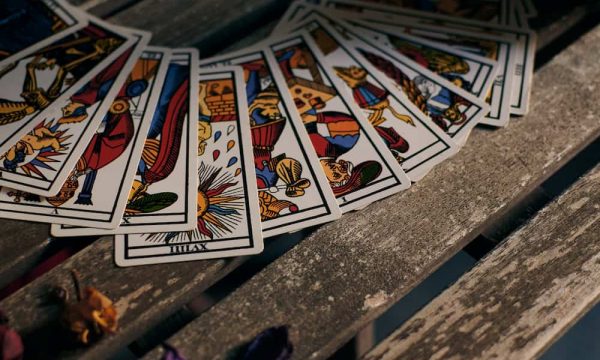
Oracle Cards vs Tarot Cards: How Are They Different?
Last Updated: July 29, 2022
Are you curious about Tarot cards but not sure where to start? Or maybe there is an Oracle deck that caught your eye, but you aren’t quite sure how to use it. Cartomancy, the use of cards to divine spiritual messages, has boomed in popularity over recent decades.
Whether you’re looking to develop your own intuition or create a routine of reflection, reading cards can be as simple or as complex as the user wishes. The wonderful thing – there are myriad themes and designs to choose from. Each reader can find a deck that speaks to them and their practice.
There are a few ways to use cards for divination, but we’ll be looking at Tarot and Oracle cards specifically. These two systems are inherently different, each presenting its own unique benefits and limitations. They can be used alone or together to create an even more enriching divination experience.

The history of the Tarot (that we know of) reaches back to 15th century Italy. Today, Tarot decks are widely available through independent creators and larger publishers. A deck includes a set of major arcana cards numbered zero to 21 and a set of minor arcana made up of four suits of 14 cards each: cups, pentacles, swords, and wands, totaling 78 cards.
The sequence of these cards tells the story of the Fool’s journey, where the querent is represented by the Fool as they face various aspects of human existence; struggles, successes, relationships, cycles, etc. Each of the minor suites signifies a specific realm and element. For example, cups typically correspond to our relationships and emotional and creative tendencies, with the element of water ruling over the suite.
The Rider-Waite-Smith deck is the quintessential Tarot deck, and one that many beginners start with. This version follows the traditional 78 card template and is a solid base for understanding the individual card meanings and their larger narrative of the journey to enlightenment.
While this is the foundational structure of a Tarot deck that doesn’t mean they all look or read the same. Many decks follow the Rider-Waite system but include updated imagery, and sometimes deviate from the four minor suites or add their own interpretations of the major arcana. The This Might Hurt Tarot is a good example, where the figures in these cards reference those in the Rider-Waite deck but are illustrated as contemporary, diverse people in modern settings using current technology.
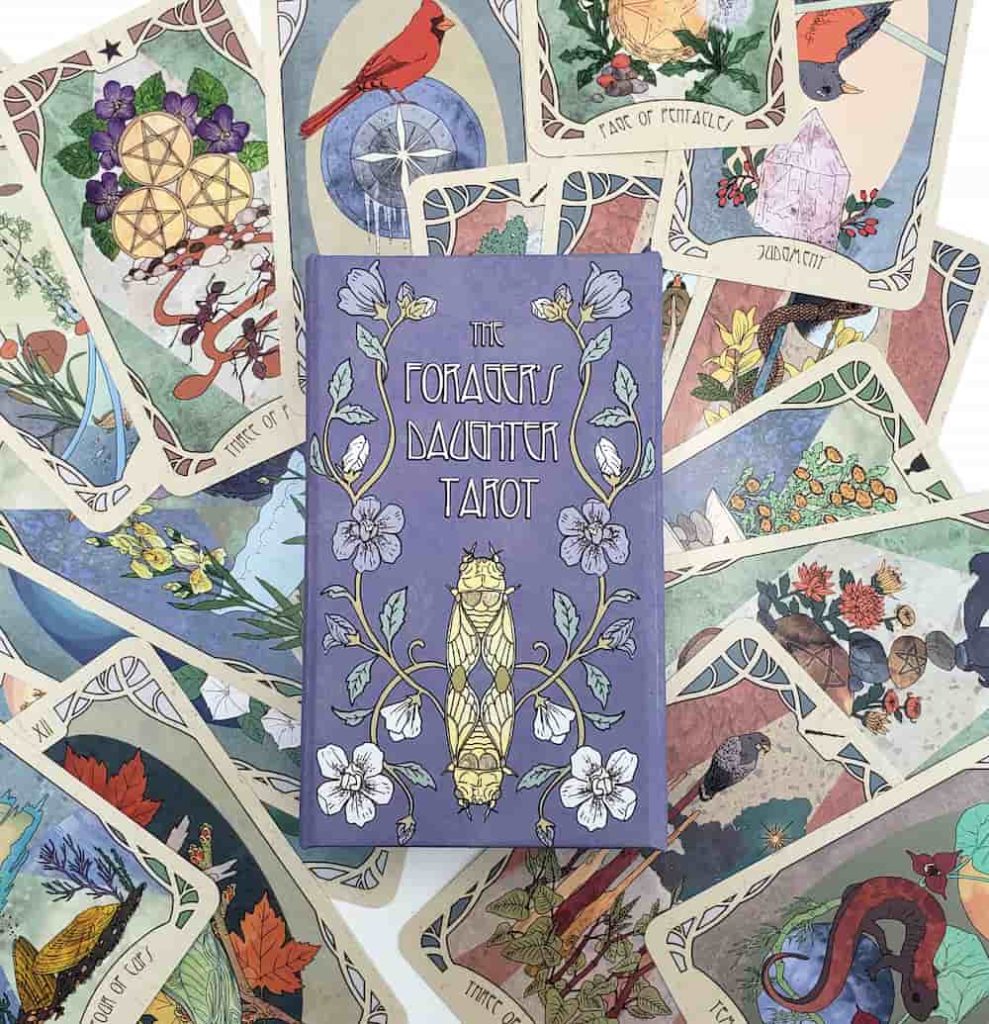
My very first Tarot deck was one I bought as a teenager – the Enchanted Tarot by Amy Zerner. Amy’s work consists of beautiful and detailed textile collages. Again, she references the traditional figures and scenes found in the Rider-Waite deck but created in her own style of jewel-tone colors and ornate patterns.
My own deck, The Forager’s Daughter Tarot, also follows the RWS system but uses nature-based imagery instead of figural. The plants and animals of each card hold their own symbolic meaning, and along with color and compositional cues, they reinforce the inherent message of that card. For example, the Strength card depicts a red-crested woodpecker and a flowering clematis vine. The woodpecker represents steady persistence and resilience, while the clematis symbolizes reaching for strongholds along the way to your goal. In the original Rider-Waite card a woman is holding open the mouth of a lion, suggesting that patience and a gentle hand can overcome brute strength. There is an overlap in meaning between the two, but I’ve taken creative liberty to make some changes to the imagery and the way the card is read.
Overall, Tarot is a complex and structured system, and it can take some time to become familiar with the cards. Because each card has a specific set of meanings a reading is usually precise and gives a focused message. This means a reader can get straightforward answers but sometimes can have difficulty figuring out how a specific card relates to their question. It can take a lot of study and practice to understand how the nuances and multiple layers of Tarot work. Using Tarot can enrich any spiritual practice as it allows for new perspectives and a deeper understanding of our past, current, and future situations. This is not to say that Tarot predicts the future, but rather gives us awareness of patterns and narratives that are playing out in our lives.
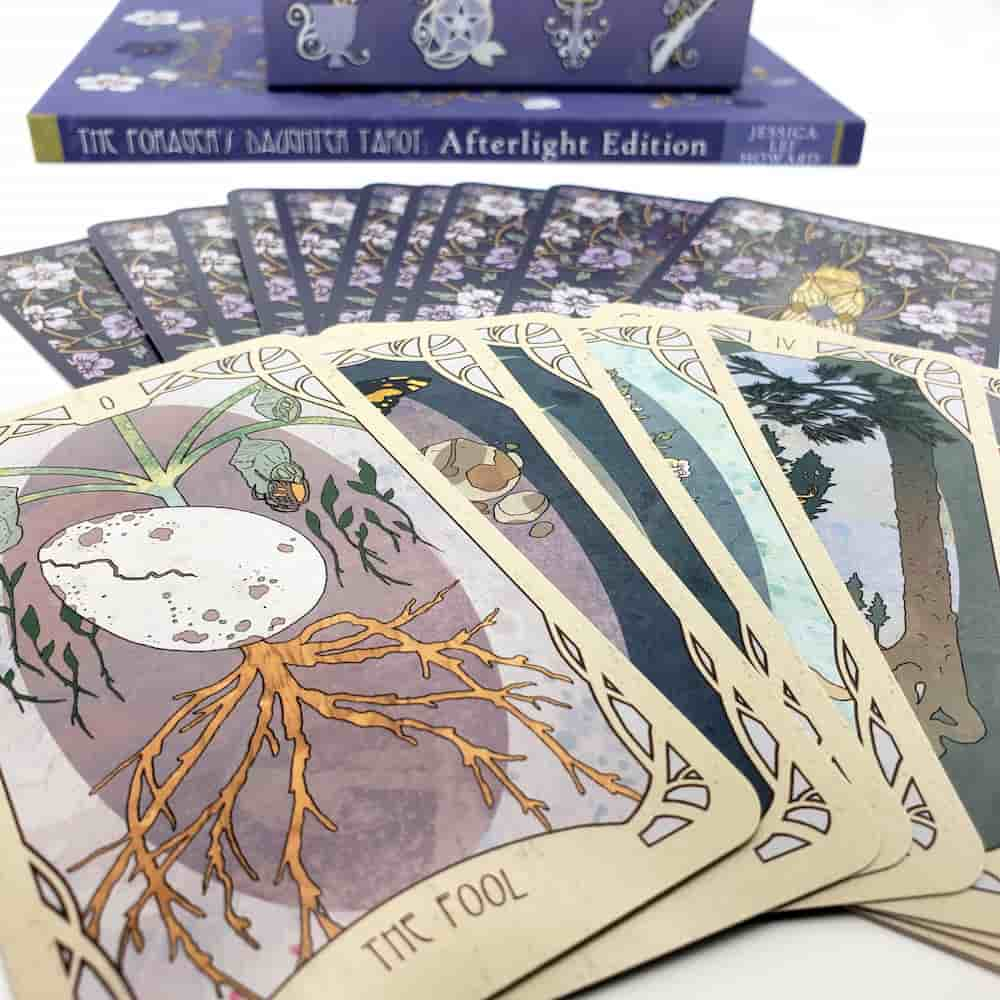
An Oracle deck works in a different way. These decks are not beholden to any specific structure or system but instead are determined by the creator’s choice of theme and function of the cards. An Oracle deck can have as little as ten to as many as 100 cards. Typically they are more fluid and general in their message, which lets the reader really imbue them with their own personal meaning. Many Oracle decks are used for affirmations, intention setting, or general messages of wisdom and guidance.
The history of the Oracle deck is fairly new, gaining popularity in the 19th century in Europe with the Lenormand system. There have been multiple variations of the Lenormand deck, but the standard set includes 36 cards of objects, animals, and figures. There are now many contemporary versions of the Lenormand, along with completely unique decks that have curated their own collection of symbols, icons, and meanings.
In the Dreamscape Oracle, artist and author Matt Hughes describe the deck as a set of messengers who guide the reader through their subconscious. This is a 31 card deck, featuring elaborate and embellished Art Nouveau inspired images of animals and figures depicted as archetypes. Each archetype offers a short narrative and a general meaning. For example, The Light card shows a woman reaching toward the sun, with the relating phrase ‘Praise the day; know you are on the right path’. This particular Oracle deck is a great example of one you might use as a daily affirmation or reminder for the day.

One of my favorite Oracle decks is the Laurel Grove South Cemetery Elucidation Deck. This deck includes 44 cards of both natural and man-made objects, plants, and creatures inspired by the icons and messages found in old cemeteries. It reads in a gentle way, and has a unique style that references colloquial patterns and folk art.
Here’s a comparison of a card from an Oracle and Tarot deck. The first card in the South Cemetery Elucidation Deck, the Crossed Keys, signifies that ‘new opportunities are waiting, but the reader must first open the door’. This is a poetic message that is general enough to be applied however the reader chooses. Looking at the Fool (also the first card in a Tarot set) there is a similar meaning of taking the first step on a new journey or phase of life. However, the Fool also includes the concepts of risk-taking, obliviousness, vulnerability, and inexperience. The Oracle card is much more open to interpretation, whereas the Tarot card offers a more detailed meaning.
Tarot and Oracle cards are similar in a lot of ways. They both are a tool for reflection and introspection and help us deepen our intuitive skills. Their differences ultimately lie in the structure, which inherently affects the function. One includes a predetermined set of focused meanings, and the other offers an open and nuanced message. Whether you are drawn to one system or decide to use them together there is no doubt about the limitless ways these cards can enhance our lives and spiritual practices.

Written by Jessica Howard
First and foremost I’m an artist, but my love of creating overlaps with my other interests of magic and divination. Nature is my biggest inspiration, and my work draws on themes of cycles, death and rebirth, and transformation. My goal is to promote awareness of our place in the world and to ground our realities back to the earth using plants and animals as allegory to human existence. Tarot has been an important tool in my own life, and I wanted to share that experience with others. I created the Forager’s Daughter Tarot as a way to connect my ideas and stories with those looking for their own personal path through introspection. You can find me on Instagram & Facebook.
Continue your tarot journey ✨
This page is part of our collection of articles on learning about tarot. If you enjoyed reading this, then you will enjoy the following articles.

Let’s take a look at different ways to store tarot decks and ensure your cards remain safe and protected in between tarot readings.
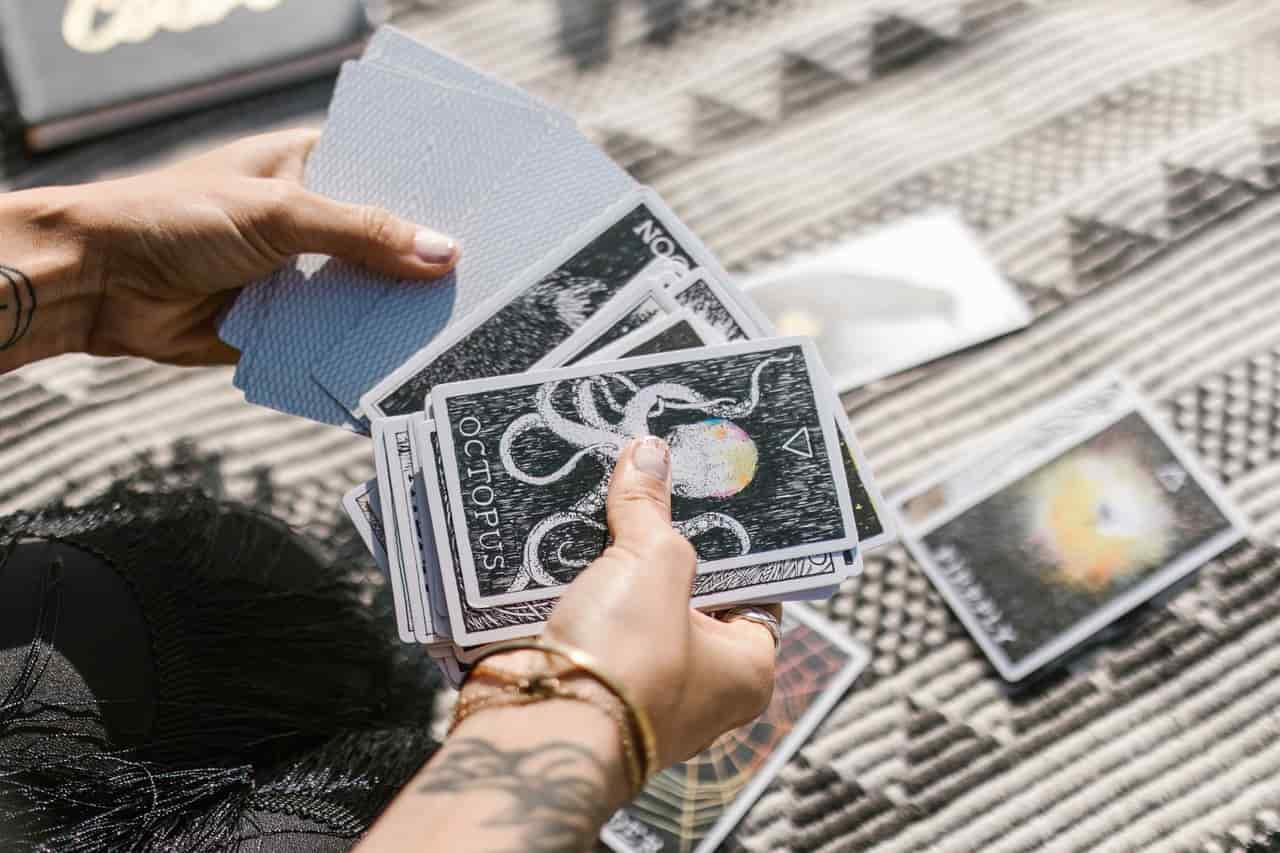
Let’s look at the top ten ways you can cleanse your Tarot or Oracle deck, as well as some do’s and don’ts to protect your cards.

We, tarot readers, love to shuffle our tarot cards! It’s all about preparing both our cards and our mind ready for the reading ahead.
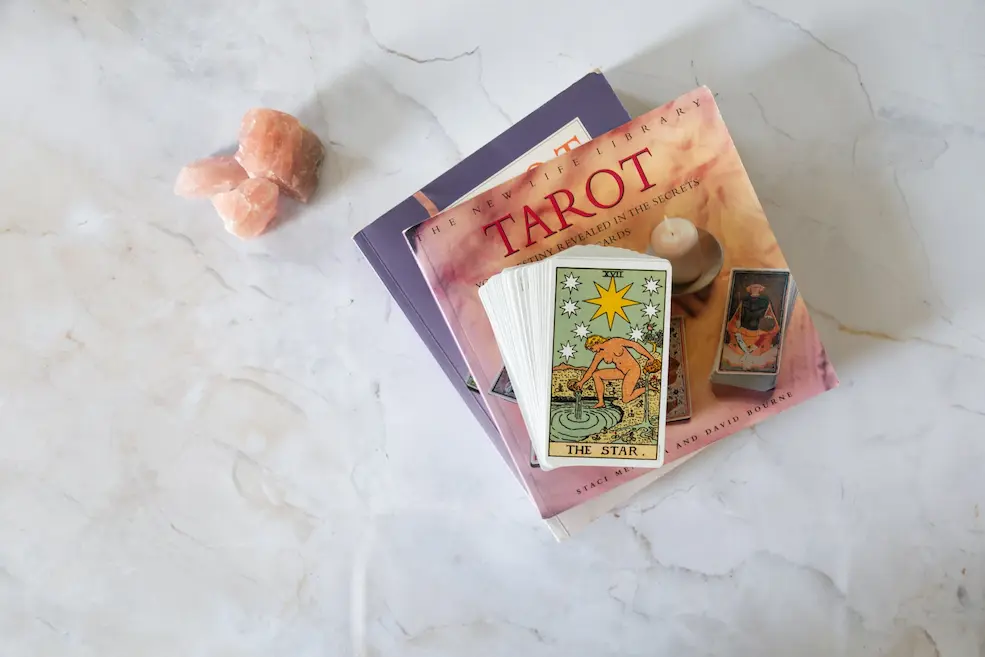
Are you new to Tarot and looking for some light reading to help get you started? Here I share 30 of the best Tarot books which offer all kinds of divination insights.
